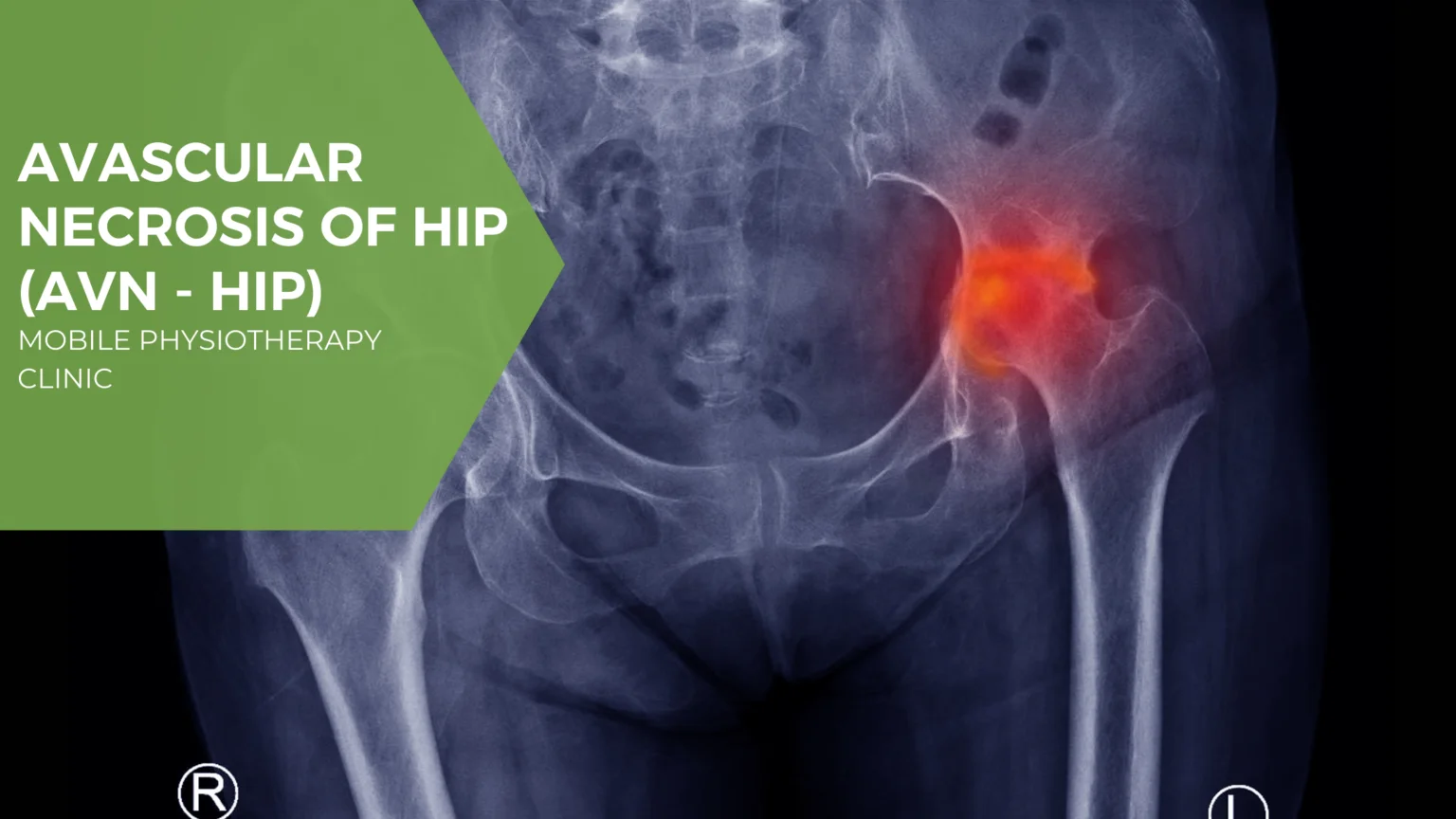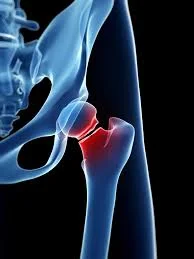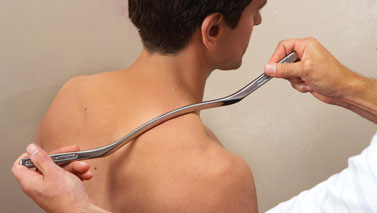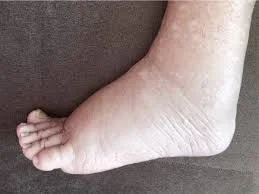Avascular necrosis of Hip (Avn – Hip): Cause, Symptoms, Diagnosis, Treatment
Avascular necrosis generally happens when something blocks the flow of blood to your bone tissue. Your bones constantly change as your skeletal system makes new bone tissue to replace aging bone tissue that eventually breaks down and dies.
Think of this as a cycle that your body that makes new tissue to replace the tissue that’s breaking down and dying. This pattern needs to happen correctly and regularly to keep your bones healthy and strong. Blood carries the nutrients and oxygen that bones need to stay healthy and regenerate. Without blood flow, your skeletal system can’t make new bone tissue fast enough. The dying bone begins to crumble and eventually collapses.
Between 10,000 and 20,000 people in different countries develop avascular necrosis every year. It can affect all ages and genders, but this condition happens most often to people in their 30s and 40s.
Avascular necrosis can affect bone tissue in any joint, but typically targets your hip the most. Other joints that can develop avascular necrosis include:
- Ankles
- Jaw
- Knees
- Upper arm (humerus) and shoulders
Table of Contents
Symptoms of Avascular necrosis of Hip (Avn – Hip)
In the early stages, Avascular necrosis may not cause any symptoms. As blood cells die and the disease progresses, symptoms may occur roughly in this pattern:
- mild or severe pain in or around the affected joint
- groin pain that spreads down to the knee
- pain that occurs when putting weight on the hip or knee
- joint pain severe enough to limit movement
Pain may dramatically increase in intensity because of tiny breaks that occur in the bone, which is called microfractures. These can cause the bone to collapse or completely break. Ultimately, the joint may break down and develop arthritis.
The time between the occurrence of first symptoms and the inability to move a joint varies from person to person. In general, it ranges from a few months to more than a year. Symptoms may appear bilaterally, which means that symptoms might appear on both sides of the body.
If avascular necrosis develops in the jaw, an exposed bone might appear in the jaw along with either pus or pain or both.
Causes of Avascular necrosis of Hip (Avn – Hip)
Things or activities that usually causes avascular necrosis more likely include:
- Alcohol: Several drinks a day usually cause fat deposits to form in your blood, which ultimately lower the blood supply to your bones
- Bisphosphonates: These medications that boost bone density could lead to osteonecrosis of the jaw. This could be more likely if you are taking them for multiple myeloma or metastatic breast cancer
- Medical treatments: Radiation therapy for cancer can weaken bones. Other conditions linked to avascular necrosis include organ transplants, like kidney transplants or liver transplant
- Steroid drugs: Long-term use of these inflammation-fighting drugs, either by mouth or in a vein, leads to 35% of all cases of nontraumatic avascular necrosis. Doctors don’t know why, but longtime use of medications like prednisone can lead to avascular necrosis. They think the medicines can raise fat levels in your blood, which lowers blood flow
- Trauma: Breaking or dislocating a hip can damage nearby blood vessels and cut the blood supply to your bones. Avascular necrosis may affect 20% or more of people who dislocate a hip
- Blood clots, inflammation, and damage to your arteries: All of these can block blood flow to your bones
Other conditions associated with nontraumatic avascular necrosis include:
- Decompression sickness, which causes gas bubbles in your blood
- Diabetes
- Gaucher disease, in which a fatty substance collects in the organs
- HIV
- Long-term use of drugs called bisphosphonates to treat cancers like multiple myeloma or breast cancer, which can lead to avascular necrosis of the jaw.
- Pancreatitis, inflammation of the pancreas
- Radiation therapy or chemotherapy
- Autoimmune diseases such as lupus
- Sickle cell disease
Preventions of Avascular necrosis of Hip (Avn – Hip)
To reduce your risk of avascular necrosis and improve your general health you must follow some tips, which include:
- Limit alcohol: Heavy drinking is one of the top risk factors for developing avascular necrosis. So limiting the intake of alcohol will help in preventing avascular necrosis.
- Keep cholesterol levels low: Tiny bits of fat are the most common substance blocking blood supply to bones, which increases the risk of getting avascular necrosis. So, you must ensure to have less fat in your diet.
- Monitor steroid use: Make sure your doctor knows about your past or present use of high-dose steroids. Steroid-related bone damage appears to worsen with repeated courses of high-dose steroids. So speak to your doctor for small doses of steroids if required for a small time period only.
- Don’t smoke: Smoking increases the risk of getting avascular necrosis, so reduce or if possible quit smoking.
Diagnosis
Your doctor might check you for avascular necrosis if you have bone pain that is limited or localized to a small area or a particular joint. To get a look at your bones, your doctor may recommend one or more of these imaging tests, like an X-Ray, MRI Scan, CT Scan or bone scan or physical tests like functional bone test:
- X-ray: X-ray images may look normal in early stages of avascular necrosis. If you have avascular necrosis, your doctor will likely use X-rays to keep track of its progression.
- MRI scan: This type of imaging can help your doctor identify avascular necrosis in very early stages and before you experience symptoms. They also can show how much of the bone is affected.
- CT scan: This gives a 3-D picture of bone but is less sensitive than an MRI scan.
- Bone scan: Bone scan is also called nuclear bone scan or bone scintigraphy. Your doctor may recommend a bone scan if your X-rays are normal and you don’t have risk factors. This test requires that you get an IV with a harmless radioactive substance before the scan. The substance lets the doctor see inside the bones. A single bone scan finds any bones affected by avascular necrosis.
- Functional bone tests: If your doctor still suspects you have avascular necrosis even though your X-rays, MRIs, and bone scans were all normal, you may have tests to measure the pressure inside the painful bone. These tests require surgery to be performed on the affected area or the particular joint that hurts.
Treatment of Avascular necrosis of Hip (Avn – Hip)
Treatment of avascular necrosis is generally done to prevent any further bone loss. The treatment includes medications, therapies and in some cases surgery is also required.
Medications and therapy
In the early stages of avascular necrosis, symptoms might be eased with medication and therapy. Your doctor might recommend you any of the below tips, medications or suggestions:
- Nonsteroidal anti-inflammatory drugs: Medications, such as ibuprofen (Advil, Motrin IB, others) or naproxen sodium (Aleve) may help relieve the pain associated with avascular necrosis.
- Osteoporosis drugs: Medications, such as alendronate (Fosamax, Binosto), may slow the progression of avascular necrosis, but the evidence is mixed.
- Cholesterol-lowering drugs: Reducing the amount of cholesterol and fat in your blood may help prevent the vessel blockages that could cause avascular necrosis.
- Blood thinners: If you have a clotting disorder, blood thinners, such as warfarin (Coumadin, Jantoven), may be recommended by your doctor in order to prevent clots in the vessels feeding your bones.
- Rest: Reducing the weight and stress on your affected bone could slow the damage. You may need to restrict your physical activity or use crutches to keep weight off your joint for several months.
- Exercises: A physical therapist might teach you exercises that can help you maintain or improve the range of motion in your joint.
- Electrical stimulation: Electrical currents may encourage your body to grow new bone to replace the damaged bone. Electrical stimulation could be used during surgery and applied directly to the damaged area. Or it may be administered through electrodes attached to your skin.
Surgical and other procedures
Because most people don’t develop symptoms until avascular necrosis is fairly advanced, your doctor might recommend surgery in such cases. The options include:
- Core decompression: The surgeon removes part of the inner layer of your bone. Besides reducing your pain, the extra space within your bone stimulates the production of healthy bone tissue and new blood vessels.
- Bone transplant or grafting of the bone: This procedure could help strengthen the area of bone affected by avascular necrosis. The graft is a section of healthy bone taken from another part of your body.
- Bone reshaping or osteotomy: A wedge of bone is removed above or below a weight-bearing joint, to help shift your weight off the damaged bone. Bone reshaping might enable you to postpone joint replacement.
- Joint replacement: If your diseased bone has collapsed or other treatments are not helping, you may need surgery to replace the damaged parts of your joint with plastic or metal parts.
- Regenerative medicine treatment: Bone marrow aspirate and concentration is a newer procedure that might be appropriate for early stage avascular necrosis of the hip. Stem cells are harvested from your bone marrow. During surgery, a core of dead hip bone is removed and stem cells are inserted in its place, potentially allowing for growth of new bone. More study is needed.
Physiotherapy of Avascular necrosis of Hip (Avn – Hip)
Conservative management such as physiotherapy is necessary to prevent further deterioration of the affected hip. However, while it has been shown to delay the disease progression, physiotherapy alone cannot cure the disease, with 70-80% of people requiring surgical treatment. Physiotherapy treatment generally includes the following treatments:
1. Weight-bear: A large aim of conservative treatment is to decrease the weight-bearing load through the head of the femur. This is usually done by the implementation of crutches or a walking aid of some sort.
2. Educate: It is also important for the surgeon or doctor to educate the patient on the prevention, removal, or reduction of risk factors such as smoking, alcohol abuse, obesity, and corticosteroids.
3. Range of motion: Once an education has been addressed, physiotherapists generally help the patient maintain joint mobility via both passive and active exercises. This is a follow-through of hands-on mobilization techniques in conjunction with stretching of tight musculature, however, both techniques remain within pain-free ranges.
4. Strengthen: Strengthening hip musculature is another focus for the conservative management of this condition. These primarily include the gluteal muscles, quadriceps muscles, and core muscles. If strength is gained in these muscle groups then less pressure is placed on the hip joint itself resulting in less pain, more movement, and improved function.
5. Exercise: Exercise or physical activity that doesn’t involve putting weight through the hip joint is recommended, particularly for those that are in more advanced stages of avascular necrosis. Hydrotherapy, with its warm and buoyant properties, can provide relief to the area as well as improved range of motion or movement. Stationary cycling is another “non-weight bearing” exercise example that is very appropriate for this condition. Another positive of these cardio-based exercises is the weight-loss benefits. If obesity was a factor in the development of avascular necrosis then these exercises would also aid in its rehabilitation as less weight will result in less pressure on the affected joint.
Exercises
Squats with theraband
- Stand with your feet slightly more than hip-width apart with a loop or mini loop band just above your knees. Your toes be point slightly outward with your hands on your hips or in front of you.
- Slowly push your hips back into a sitting position while bending your knees.
- Continue to lower yourself until your thighs are parallel to the floor. Your knees should be at a 90-degree angle. Hold the position for 2–3 seconds, then slowly lift back up into the starting position.
- Perform 8–12 reps.
Banded glute med bridges
- Position a resistance band around your legs, slightly above the knees.
- Raise the hips while pressing the knees outward (keeping tension on the band)
- Squeeze the glutes at the top before slowly lowering the butt back down to the starting position.
- Perform 8-10 reps.
Stationary Cycling
- Start off pedaling at a low intensity for 5-10 minutes.
- Switch to medium intensity for 3-5 minutes.
- Alternate between high intensity (1-3 minutes) and medium intensity (3-5 minutes) for the next 20 to 30 minutes.
- Cool down by pedaling at a low intensity for 5-10 minutes.
Ensure not to overstrain your hip as that might increase the risk even more.
Due to the pain involved with avascular necrosis, compensatory methods may be present. Thus, physiotherapists or doctors should also take time to analyze the technique of the patient when performing any exercise as incorrect motor patterns can result in accelerated degeneration of the hip joint.







